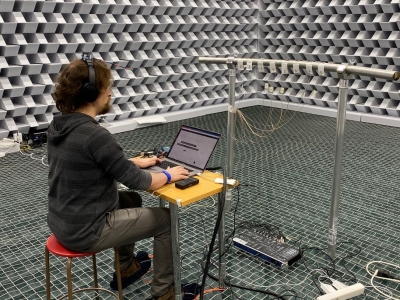
Positive impact
CO2 Emission
Reports that emerged late 2020 showed that the pandemic did have an impact on the CO2 emission last year. Widespread shutdowns, drastic reduction in industrial activities and commuter traffic led to significant drop in the level of greenhouse gases in the atmosphere. In November 2020, the World Meteorological Organisation (WMO) estimated that the annual global CO2 emission reduced 4.2-7.5 % in 2020. April 2020 saw a drop of about 17% in global monthly CO2 emissions from fossil fuels, but the annual CO2 emissions for the globe were only 7% lower than they were in 2019. However, the WMO called it a blip on the planet’s uncontrolled emission scenario. Scientists pointed out the Earth’s atmosphere has a heavy concentration of greenhouse gases, including CO2. The temporary reduction in emission due to the pandemic would not curb global warming and resultant climate change. However, we can consider this a positive impact because the pandemic has shown us that it is not impossible to reduce CO2 emission and it has offered us many lessons on Nature conservation – lessons, albeit learnt the hard way.
Pollution
Besides CO2, the concentration of other pollutants such as carbon monoxide, NO2 and PM2.5 also saw a sharp reduction in major cities of the world last year.
Water quality
Water quality too improved in 2020. For the first time in decades, the water of river Ganga was found to be fit enough for drinking as per a study conducted by the Indian Institute of Technology, Roorkee. Scientists attributed it to the lockdown induced by the pandemic. There was 500% reduction in sewage and industrial effluents, and human activities in the vicinity of the river were almost nil. Studies conducted in the U.S., European countries, and China had also found an improvement in water quality in the rivers and lakes of their respective countries.
Less noise
With industries and traffic falling silent for a major part of the pandemic, there has been a reduction in noise pollution. A short-term study conducted in Pune last year showed that commercial areas witnessed the maximum drop from 74.56 decibels (dB) in March 2020 to 66.55 in April 2020, and residential areas saw it drop from 49.75 dB to 47.48 dB and silent zones from 49.53 dB to 47.11 dBIn Kanpur, the average noise levels before and during the lockdown were found to be in the range of 44.85 dB to 79.57 dB and 38.55 dB to 57.79 dB respectively. Similar reduction in noise was also found in other parts of the world. However, it is to be remembered that these improvements won’t last if the world goes back to its pre-pandemic ways.
Wildlife
After several early cases of COVID-19 were linked to a wet market in China, wildlife trade became central to discussions on public health. Countries such as China and Vietnam acted quickly to introduce large-scale prohibitions of wildlife trade. China upgraded the legal protections for pangolins to the same status as the nation’s beloved panda, prohibiting nearly all domestic trade and use. This is among the biggest positive outcomes of the pandemic.
Meanwhile, the lockdown brought wildlife to the cities. Animals in urban areas were exploring empty streets and waterways. Those in the nature reserves and parks caught some quiet time without the disturbances from tourists. Even sea turtles were spotted returning to areas they once avoided to lay their eggs, all due to the lack of human interference. Scientists reported that plants were growing better because there was cleaner air and water.
Negative impact
Biomedical waste
The management of biomedical waste such as personal protective equipment (PPE), gloves, face masks, head cover, among other gear and medical equipment used by both healthcare providers and patients is the biggest challenge that governments around the world are facing. According to the data shared by Central Pollution Control Board, India generated over 18,000 tonnes of COVID-19-related biomedical waste between June and September last year. India’s Covid vaccination drive is also seeing thousands of syringes being disposed of every day. The Indian government has defined standards, protocols and guidelines for different categories of biomedical waste but unsafe disposal of such waste in open dustbins is not uncommon in the country.
Plastic is back
Just a couple of years ago, the world woke up to the problem of plastic and was taking measures to find an alternative to single-use plastic. Many countries and States of India had restrictions on the usage of single-use plastic. But those commitments were thrown out the window when the pandemic hit us. Moreover, plastic products play a significant role in protecting people during the COVID-19 pandemic. Materials such as PPE suits, face shields, masks and gloves are plastic, and they are meant to be disposed of after single use. Besides, the fear of surface contamination has made disposal cups, cutleries, and plastic bags make a swift comeback. The amount of plastic waste generated worldwide since the COVID-19 outbreaks estimated at 1.6 million tonnes / day. This could cause a surge in plastics washing up on the ocean coastlines and littering the seabed.
Deforestation and poaching
Many people have lost their jobs and livelihood due to COVID-19 and this has contributed to illegal tree felling, illegal mining and wildlife poaching. There are reports of increased deforestation in Asia, Africa, and Latin America.
Areas that are economically dependent on tourism face reduced resources as tourism has come to a halt. This is leaving animals in the reserves with much less protection. There has been an increase in wildlife poaching – either to provide food for hungry families or for illegal sales.
Picture Credit : Google



